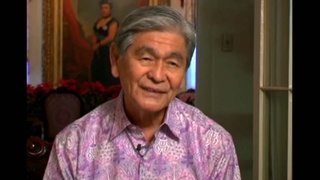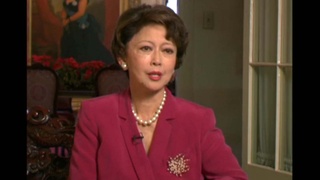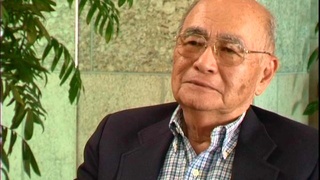Interviews
1920 labor strike
My father, he was a clerk at the old sugar company warehouse. Huge warehouse, where he took charge of the inventory. All the hospital supplies, the plumber’s supplies and even the carpenter shop supplies were all stored [truck noise] in the huge warehouse right above the plantation village, Hawaii plantation village. And so, for him it was very difficult to participate in the strike because he was a salary man. And I think in the beginning, he didn’t, you know. So, I think he suffered, too, because people were against him and I think he suffered discrimination. And so finally, he joined with the strikers. And I think that left a very unpleasant feeling for him that made him decide to return to Japan.
Date: February 19, 2004
Location: Hawai'i, US
Interviewer: Lisa Itagaki, Krissy Kim
Contributed by: Watase Media Arts Center, Japanese American National Museum.
Explore More Videos

Decision to run for governor
(b.1926) Democratic politician and three-term Governor of Hawai'i

Being fair
(b.1926) Democratic politician and three-term Governor of Hawai'i

Role of Hawaii internationally
(b.1926) Democratic politician and three-term Governor of Hawai'i



Image of Americans
Sansei from Hawaii living in Japan. Teacher and businesswoman.

Growing up in Waikiki
(b. 1924) Political scientist, educator, and administrator from Hawai`i

Working at a first aid station on Oahu after December 7
(b. 1924) Political scientist, educator, and administrator from Hawai`i

Under suspicion after Pearl Harbor
(b. 1924) Political scientist, educator, and administrator from Hawai`i

Change in attitudes after World War II
(b. 1924) Political scientist, educator, and administrator from Hawai`i

The Kona Island community
(1923-2011) Lawyer, MIS veteran, founder of Francis and Sarah Sogi Foundation

Starting work at five years old
(1923-2011) Lawyer, MIS veteran, founder of Francis and Sarah Sogi Foundation

Meeting Japanese Americans from the mainland in MIS
(1923-2011) Lawyer, MIS veteran, founder of Francis and Sarah Sogi Foundation

Not relating to Japan Americans' experiences on the mainland
(1923-2011) Lawyer, MIS veteran, founder of Francis and Sarah Sogi Foundation

Less information about Hawai‘i in mainland
(b.1944) Founder of Kobayashi Group, LLC
